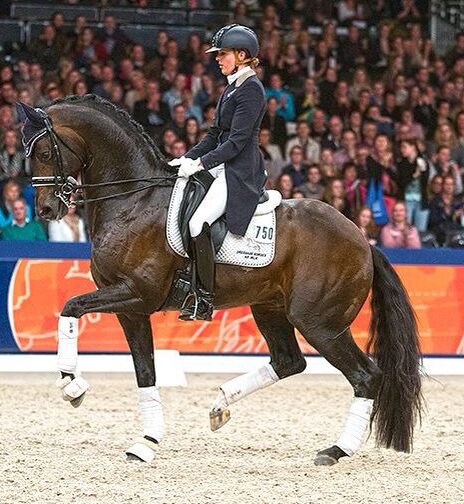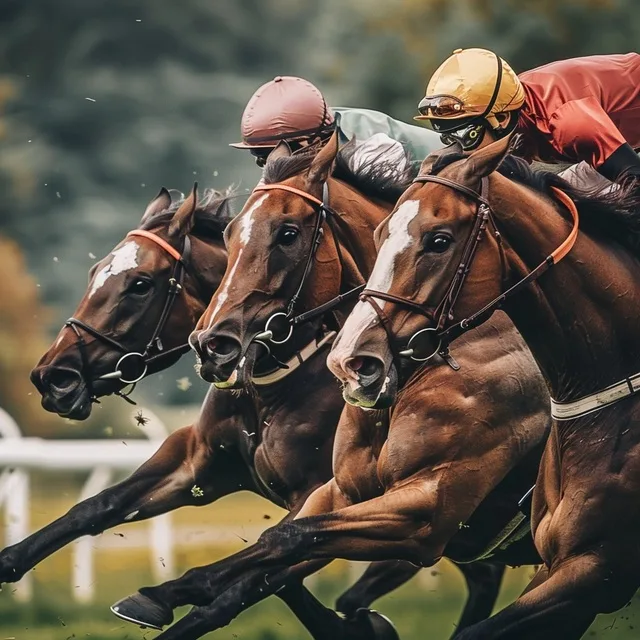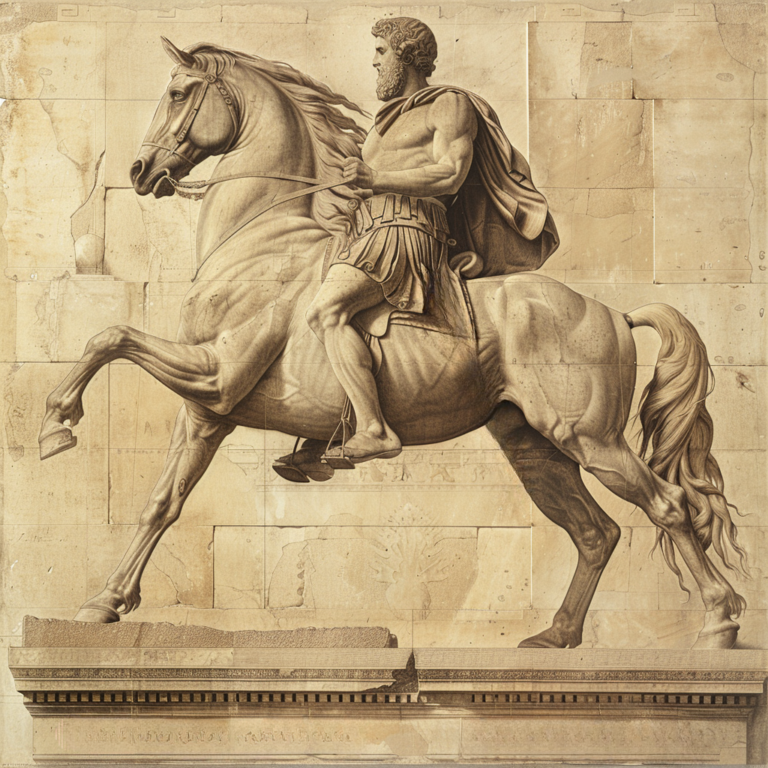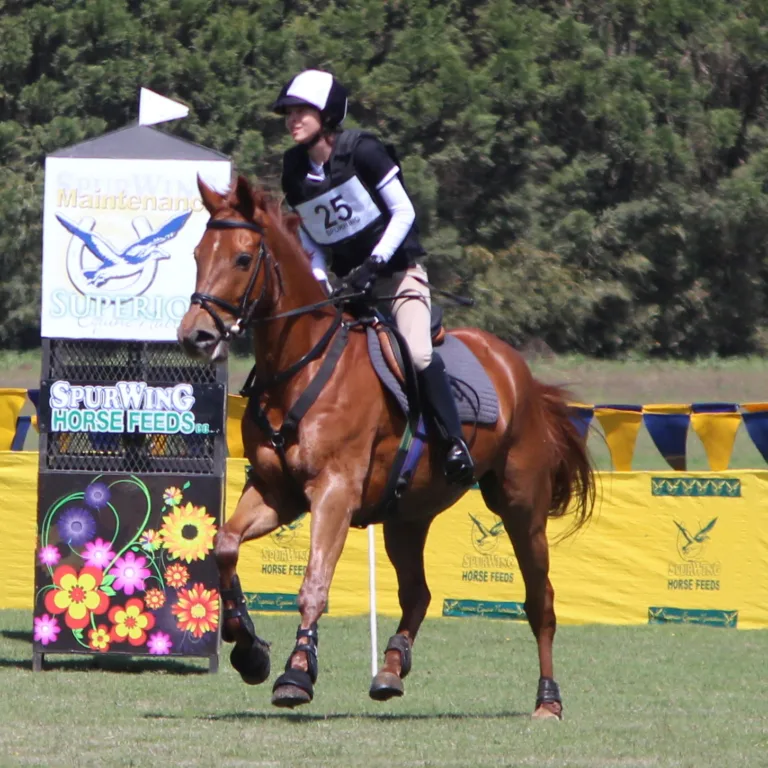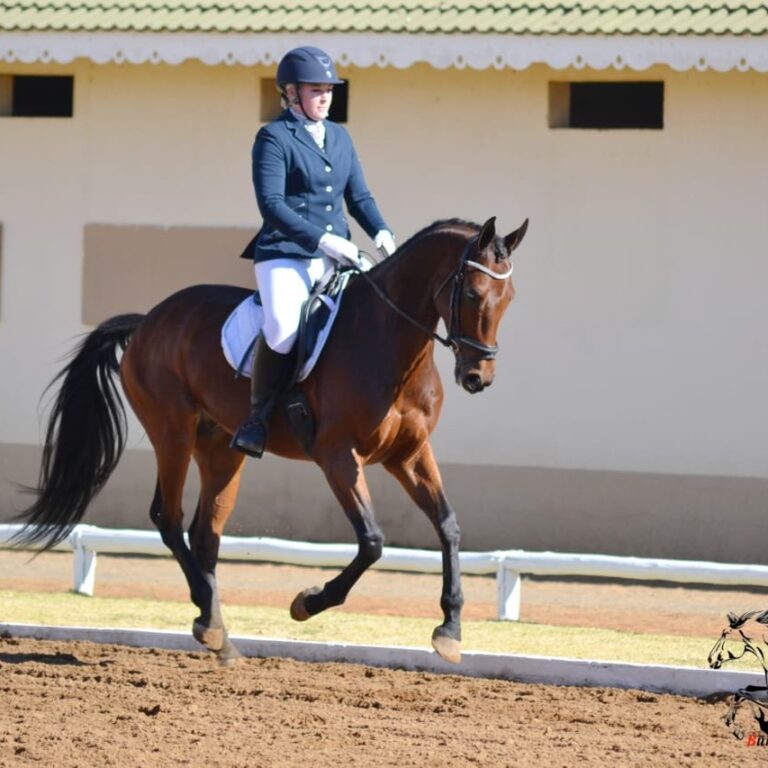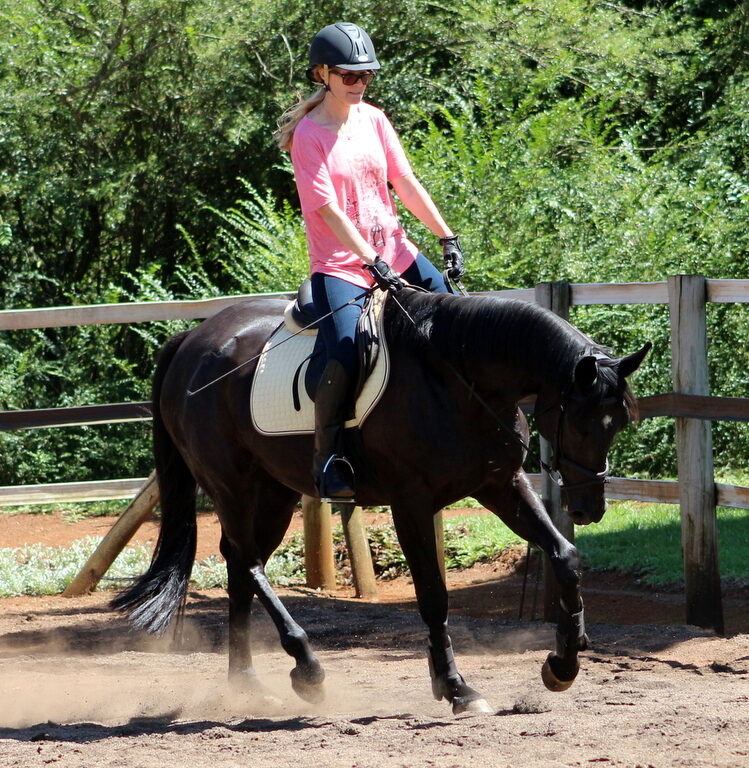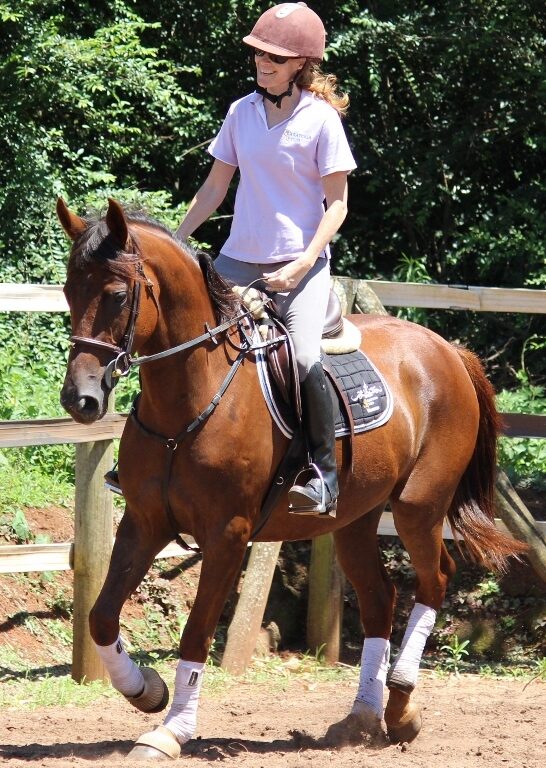Understanding Dressage: The Principles and Objectives of the Sport
Dressage is a French term loosely translated to ‘training’ and is a horse riding discipline of a rider and horse riding to a set of instructions involving different movements of the horse.
It is described by the International Equestrian Federation as ‘ the highest expression of horse training’ where ‘horse and rider are expected to perform from memory a series of predetermined movements.
Dressage is a highly disciplined and technical form of horse riding that has been practiced for centuries. It involves a rider and horse performing a series of intricate movements, in harmony and with precision. This equestrian discipline has evolved over time and is now a widely recognized sport around the world.
This blog post aims to provide a comprehensive overview of dressage, including its principles, objectives, levels, movements, training methods, competitions, and necessary attire and equipment. Whether you are a beginner looking to learn more about dressage, or a seasoned rider seeking to improve your skills, this guide has something for everyone.
The importance of dressage in the equestrian world cannot be overstated. It not only provides a platform for riders to showcase their talent and training, but also serves as a basis for training horses in other disciplines such as show jumping and eventing. The principles of dressage, such as harmony, lightness, and precision, are also relevant to everyday riding and can help develop a deeper understanding of the horse’s movement and behavior.
Whether you are a competitive rider, a horse enthusiast, or simply curious about dressage, this guide will provide you with a solid foundation to understand and appreciate this beautiful and demanding sport.
The art of Dressage takes years of trust and communication between the rider and horse.
principles of dressage
Dressage is based on three main principles: harmony, lightness, and precision. These principles are interdependent and aim to create a perfect partnership between horse and rider.
Harmony refers to the unity and cooperation between the horse and rider. In dressage, the horse should move in a natural and effortless way, responding to the rider’s aids without tension or resistance. The rider should also be in balance and harmony with the horse, maintaining a soft and supple connection through the reins.
Lightness refers to the ease and lightness of the horse’s movements. The horse should move with a lightness and fluidity that appears effortless, as if dancing. This is achieved through proper training and conditioning, with a focus on developing the horse’s balance, flexibility, and strength.
Precision refers to the accuracy and consistency of the horse’s movements. In dressage, every movement has a specific purpose and must be executed with precision and attention to detail. The horse should respond to the rider’s aids immediately and with precision, performing each movement with exactness and correctness.
These principles guide the training of both horse and rider in dressage. The rider must have a deep understanding of the horse’s movement and behavior, and must be able to communicate effectively with the horse through a combination of aids, including seat, legs, and reins. The horse must also be trained to respond to these aids in a correct and consistent manner, with a focus on developing the horse’s physical and mental abilities.
Through consistent and patient training, the principles of harmony, lightness, and precision can be achieved, resulting in a beautiful and harmonious partnership between horse and rider.

the objectives of dressage
Dressage is a sport that emphasizes the development of a harmonious partnership between horse and rider through the use of communication and precision. The objectives of dressage are focused on improving the horse’s physical and mental abilities, as well as developing the rider’s skills and understanding of how to communicate with their horse.
One of the primary objectives of dressage is to improve the horse’s balance. Horses naturally carry more weight on their front legs, but through dressage training, they can learn to shift their weight back onto their hindquarters, resulting in a more balanced and athletic posture. Another objective is to improve the horse’s suppleness, which refers to the horse’s ability to move freely and smoothly without stiffness or tension. This is achieved through exercises that encourage the horse to flex and stretch their muscles, improving their range of motion and overall athleticism.
In addition to improving the horse’s physical abilities, dressage also aims to develop their obedience. Through consistent training and repetition, the horse learns to respond to the rider’s aids and cues, becoming more willing and responsive. This not only makes the horse more enjoyable to ride but also safer and more reliable.
Dressage also has objectives for the rider. Developing the rider’s seat, aids, and feel is crucial to becoming a skilled dressage rider. The rider’s seat refers to their position and balance on the horse, while the aids refer to the subtle cues they give the horse through their hands, legs, and seat. Developing feel means having an intuitive understanding of the horse’s movements and reactions, allowing the rider to communicate effectively and subtly with their horse.
The objectives of dressage aim to create a harmonious partnership between horse and rider, in which both are physically and mentally balanced, responsive, and athletic. Achieving these objectives requires dedication, hard work, and a deep understanding of the principles of dressage.
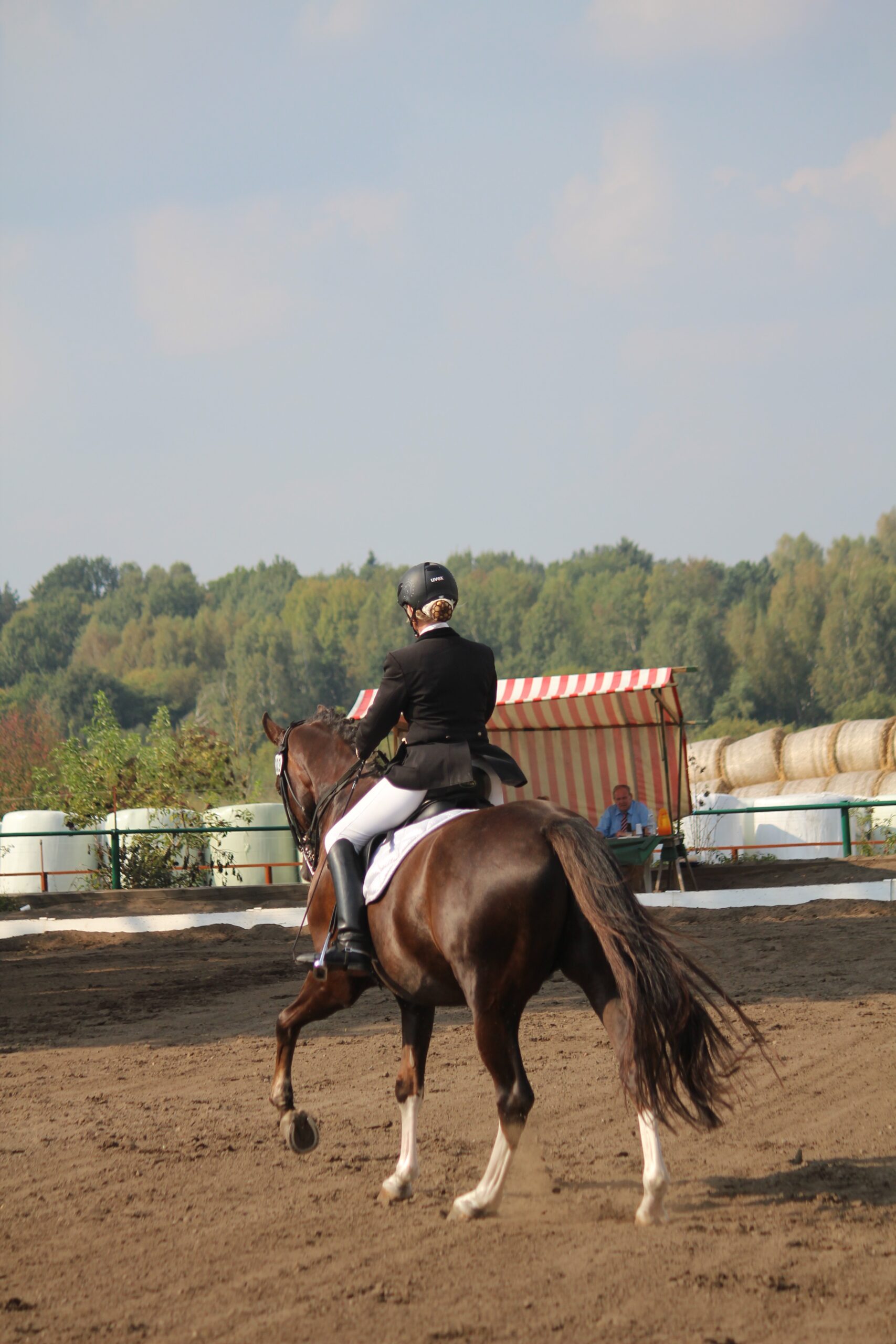
Levels of dressage
The levels of dressage are designed to provide a clear path for riders and horses to progress through as they gain experience and skills. There are currently 10 levels of dressage recognized by the International Equestrian Federation (FEI).
At the introductory levels, riders focus on basic movements such as walk, trot, and canter, as well as developing a correct and effective position. As riders progress to the higher levels, they must perform more complex movements, including lateral work, changes of lead, and collection.
The levels of dressage are:
- Introductory Level: This level is designed for new riders and young horses. The tests include basic movements such as walk, trot, and canter, and are performed on a loose rein.
- Training Level: At this level, riders begin to work on the basics of dressage, including achieving a consistent rhythm and developing impulsion. The tests include 20-meter circles, changes of direction, and simple transitions.
- First Level: Riders at this level begin to work on more advanced movements such as lengthened strides and shallow loops. The tests also include counter-canter and simple changes of lead.
- Second Level: Riders at this level must perform more complex movements such as shoulder-in, haunches-in, and half-pass. They also work on improving the quality of the horse’s gaits.
- Third Level: At this level, riders work on improving the horse’s collection and self-carriage. The tests include flying changes of lead, pirouettes, and extended trot.
- Fourth Level: Riders at this level must perform advanced movements such as piaffe, passage, and canter pirouettes. The tests also include a greater degree of collection and self-carriage.
- Prix St. Georges: This level marks the beginning of the international levels of dressage. The tests include one-tempi changes and half-pirouettes.
- Intermediate I: Riders at this level must perform more advanced movements such as extended canter, canter zigzag, and half-steps.
- Intermediate II: At this level, riders must perform advanced lateral work such as travers, renvers, and half-pass in canter.
- Grand Prix: The highest level of dressage, riders at this level perform a series of advanced movements, including piaffe, passage, one-tempi changes, and canter pirouettes.
As riders progress through the levels, they must earn scores from judges in order to move up to the next level. The scores are based on the quality of the horse’s gaits, the accuracy and execution of the movements, and the rider’s effectiveness in communicating with the horse.
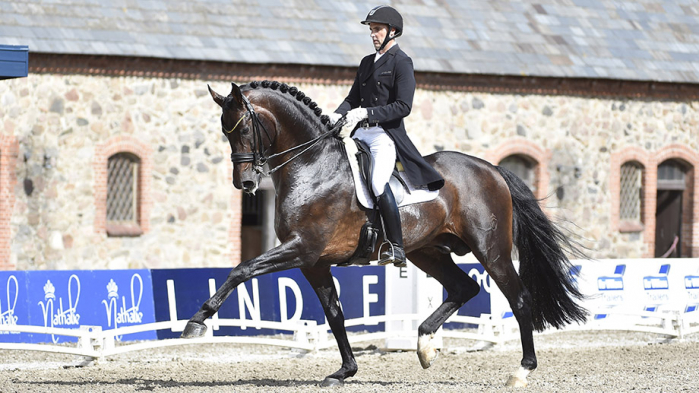
Dressage Movements
Dressage movements are the various exercises that a horse and rider perform during a dressage test. These movements are designed to showcase the horse’s balance, suppleness, and obedience, and to test the rider’s skill in communicating with their mount. Here are some of the most common movements seen in dressage:
- Halt: The horse stands still, with all four feet on the ground.
- Walk: The horse moves forward with a four-beat gait, where each foot touches the ground separately.
- Trot: The horse moves forward with a two-beat diagonal gait, where the front and hind legs move in unison.
- Canter: The horse moves forward with a three-beat gait, where one hind leg strikes off, followed by the opposite hind and the outside fore, then the inside fore.
- Leg Yield: The horse moves sideways, with the forehand moving away from the hindquarters. This movement is used to improve the horse’s lateral flexibility and to teach the horse to move off the rider’s leg.
- Shoulder-in: The horse moves forward and sideways at the same time, with the shoulders positioned towards the inside of the arena. This movement is used to improve the horse’s balance and suppleness.
- Haunches-in: The horse moves forward and sideways at the same time, with the hindquarters positioned towards the inside of the arena. This movement is used to improve the horse’s balance and suppleness.
- Half-pass: The horse moves forward and sideways at the same time, with the shoulders and hindquarters positioned towards the opposite side of the arena. This movement is used to improve the horse’s lateral flexibility and balance.
- Flying changes: The horse changes its lead leg during the canter stride, with the front and hind legs changing at the same time. This movement is used to improve the horse’s balance and obedience.
Each movement has a specific purpose in the training of the horse, and the rider must be able to execute them with precision and control. The combination of these movements in a dressage test showcases the horse’s level of training and the rider’s skill in communicating with their horse
Dressage terms
At the international level, dressage tests are controlled by the FEI and are called the Prix St Georges, Intermediare I, Intermediare II, and Grand Prix. The dressage performed at the Olympic Games is Grand Prix tests.
The following are the names of specific movements included in Grand Prix tests:
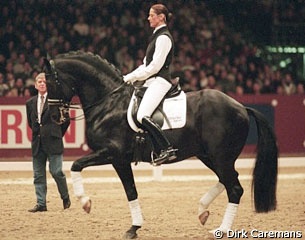
Piaffe
A calm, collected elevated trot on the spot (minimal movement forward is allowed) where the horse sits low on its hindquarters and brings its knees up in a four-beat rhythm.
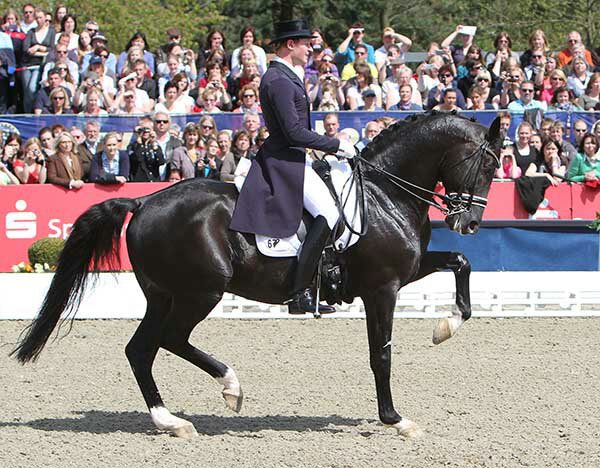
Passage
A very collected trot where the horse elevates its stride and seems to pause in between each stride with a huge amount of suspension. This is a very high level of collection where the horse sits lower on its hindquarter as mentioned above, this movement moves forward.
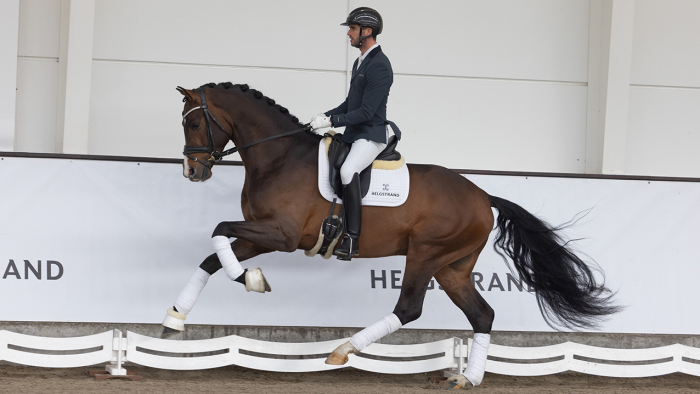
Extended Movements
These are done at the trot and the canter where the horse lengthens its stride using energy from the hindquarters and stretching its front legs out as high as the horse is able. This is done under control and the horse does not go faster by lengthening its stride. This is very impressive to watch especially at the trot. The extended walk is also performed where the horse is expected to relax and stretch its neck lower.
Collected Movements
This is where the horse shortens its stride where the horse brings its hindquarters underneath itself and carries its weight on its hindquarters. The pace of the horse does not change, the stride just shortens and gets more elevated.
Flying changes
These can also be called ‘tempi’ changes. The horse changes its canter lead at every one or two strides.
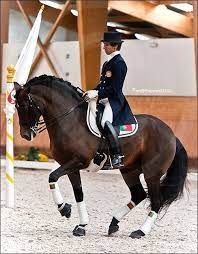
Pirouette
This is a 360-degree turn at the canter. In musical Kur (dressage to music) a turn of 720 degrees is allowed.
Half pass
A movement where the horse goes on a diagonal, moving sideways and forwards at the same time while its body is bent slightly in the direction of the movement.
Dressage tests ridden at the Olympic Games are judges by a panel of seven international judges situated at different places around the arena.
Dressage Training
Training a horse is expected to take place in the following order. This order was developed at the same pace as the horse The following are expected in basic dressage training as it progresses:
- Rhythm and regularity
- Relaxation
- Contact
- Impulsion
- Straightness
- Collection
Rhythm and regularity
The rhythm, gait, and tempo of the horse should be maintained throughout the dressage test. Rhythm refers to the regularity of the horse’s footsteps. The gait includes the evenness and levelness of the stride. Once a rider can avoid irregularity the combination can move on to more advanced exercises.
relaxation
The second level in this training method is relaxation. Signs that the horse is relaxed show in the stride and the swinging through its back and the loose swing of its tail like a pendulum. It should be loose at its poll and chew softly at the bit and relaxed breathing through the nostrils. The horse should make smooth transitions and willingly reach down into the contact of the bit.
Contact
This is the result of the horse pushing from behind and cannot be achieved by the pulling of the rider’s hands. The rider encourages the horse to stretch into soft hands that allow the horse to lift up the neck and come up into the bridle. The rider’s hands should always follow the movement of the horse’s head. There should be equal contact in both reins.
Impulsion
The pushing power of the horse. This is created by storing the energy of engagement – the hind legs reaching under the horse’s body. This should be seen in all the gaits, it is important to establish the forward movement. Impulsion encourages correct muscle development and engages the horse’s mind getting it to focus on the rider.
Straightness
A horse is considered straight when the hind legs follow the path of the front legs and the body follows the direction the horse is traveling in. Straightness allows the horse to channel its impulsion towards its center of balance and allows the rider’s hands to have a connection with the hind end of the horse.
Collection
At the very top of the dressage training is collection. All the previous six stages are in preparation to be able to collect. It requires a strong horse so needs to be introduced slowly as the horse gets stronger. When in a collected gait the horse should shorten its stride and this stride should increase in energy and activity.
Dressage Training
Dressage training methods can be divided into two categories: classical and modern. Classical dressage emphasizes a harmonious partnership between horse and rider, with a focus on balance, lightness, and obedience. Modern dressage, on the other hand, places greater emphasis on the horse’s athletic ability and the technical execution of movements.
Regardless of the training method used, consistency is key in dressage training. Regular and structured training sessions, along with a clear understanding of the horse’s individual needs, are essential for success in dressage. Timing is also crucial, as aids must be given at the appropriate moment to communicate effectively with the horse.
Dressage training involves a variety of exercises designed to develop the horse’s physical and mental abilities. These exercises include basic movements such as circles, transitions, and changes of direction, as well as more advanced movements like pirouettes, half-passes, and flying changes. The training process is gradual and progressive, with movements introduced and developed as the horse becomes stronger and more confident.
In addition to regular riding sessions, dressage training often includes other forms of exercise, such as lunging, long-lining, and ground work. These exercises can help to develop the horse’s balance, suppleness, and strength, and can also be useful in correcting any issues or imbalances.
Dressage training requires patience, dedication, and a deep understanding of the horse’s nature and needs. With consistent and effective training, horses can develop into willing and responsive partners, capable of performing the precise and demanding movements of the highest levels of dressage.
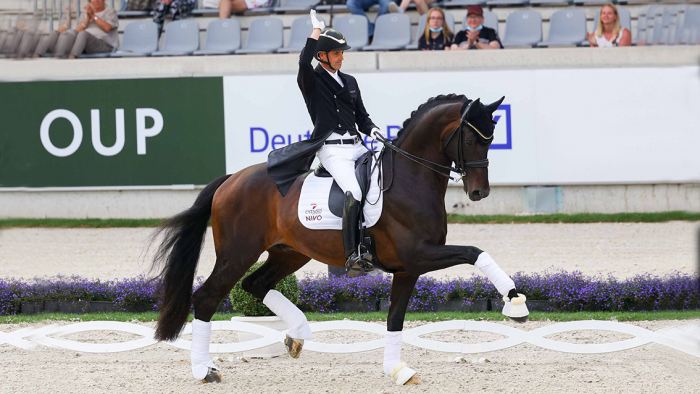
Dressage competitions
Dressage competitions can be held at various levels, from local shows to international competitions such as the Olympic Games. There are different types of dressage competitions, including freestyle, team, and individual events.
In freestyle competitions, riders choose their own music and choreograph their own routine, which must include a set of required movements. The score is based on the rider’s performance, the horse’s obedience and quality of movements, as well as the artistic impression of the overall presentation.
Team competitions are held with a group of riders representing their country or club. In this type of competition, riders perform the same test, with the team score being based on the combined scores of each member. The team with the highest total score wins.
Individual competitions are similar to team competitions, but riders compete against each other rather than as a team. Each rider performs the same test, and the highest score wins.
Dressage competitions are judged on a scale of 0-10, with the scores for each movement being added up to produce an overall score for the test. The judge is looking for precision, suppleness, balance, and harmony between horse and rider. In addition, the judge also considers the rider’s position, the horse’s performance, and overall impression of the performance.
Penalties may be incurred for mistakes or errors, such as a horse not being on the correct lead or breaking gait. These penalties will be deducted from the overall score.
Dressage competitions serve as a way to demonstrate the progress of the horse and rider’s training and offer a way to measure their skills and abilities against others in a competitive setting.
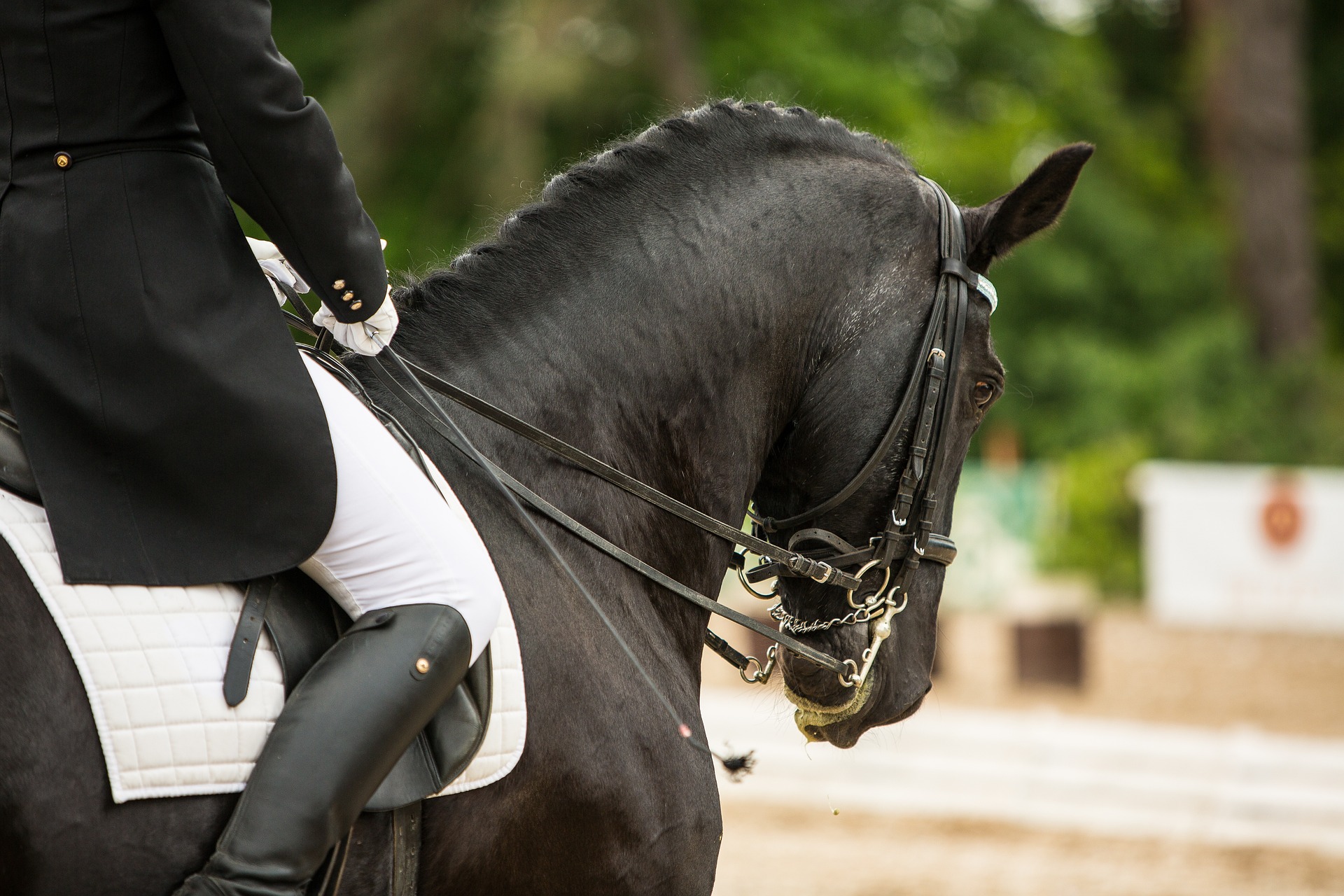
Dressage attire and equipment
Dressage attire and equipment are important elements in ensuring the safety and performance of both horse and rider during training and competition. In this section, we will detail the necessary attire and equipment for dressage and discuss their importance.
- Horse Tack The horse’s tack for dressage includes a dressage saddle, bridle with a snaffle bit, and dressage girth. The dressage saddle is designed with a deep seat and long, straight flaps to help the rider maintain a correct position and aid in communication with the horse. The bridle includes a simple snaffle bit, which allows for gentle communication with the horse’s mouth. The dressage girth is typically shorter than a jumping girth and designed to prevent the saddle from slipping.
- Rider’s Clothing The rider’s clothing for dressage includes a helmet, riding boots, breeches, a show shirt, and a show coat. The helmet should meet safety standards and be properly fitted to the rider’s head. Riding boots should provide proper support and fit snugly around the ankle. Breeches are designed for comfort and flexibility, with a full-seat or knee-patch to aid in grip. The show shirt and coat should be conservative in color and design, with the coat typically worn only during the test.
Proper equipment and attire are essential for the safety and performance of both horse and rider in dressage. The dressage saddle, bridle, and girth are designed to aid in communication and balance, while the rider’s clothing provides support and allows for flexibility in movement.
It is important to invest in quality equipment and attire and properly maintain and care for them to ensure their longevity and effectiveness.
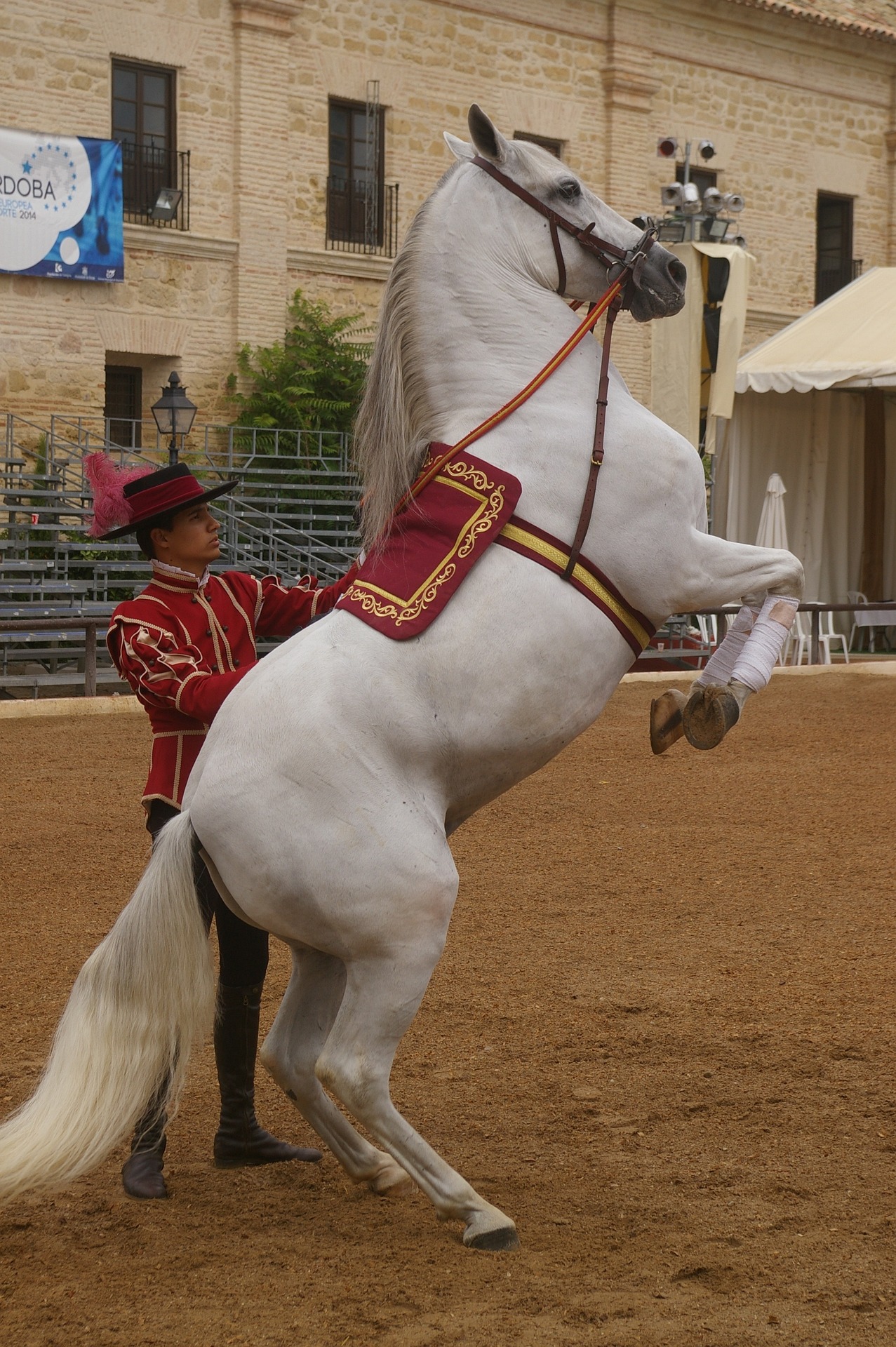
‘Airs above the ground’
These are a series of higher-level classical dressage movements where the horse leaves the ground. This includes movements such as the capriole, courbette, mezair, croupade, and levade. None of these movements are practiced in modern dressage but are performed by various dressage schools such as the Spanish Riding School in Vienna. Lipizzaners are often used to train to perform these movements as they are built to be able to do the movements because of their powerful hindquarters which give them the strength to perform these movements.
There is a belief that these movements were taught as military manoeuvers but these movements would cause their bellies to be exposed so that is unlikely. More likely they were taught to improve the horse’s agility and responsiveness to be useful in combat.
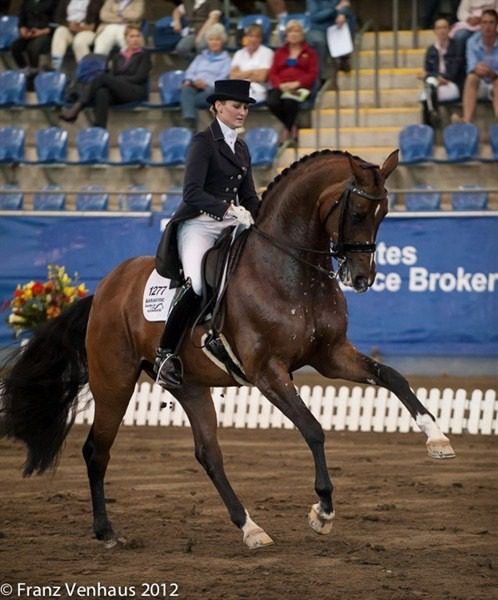
Dressage is the foundation of most equestrian disciplines. It is teaching the horse basic aids that can be used as the foundation for further training in all disciplines.
The goal of dressage is to develop the horse’s responsiveness to its rider’s aids, flexibility, and balance which will make the horse stronger and more pleasurable to ride and create harmony and trust between the rider and horse.
in conclusion
Dressage is a beautiful and precise equestrian discipline that emphasizes harmony, lightness, and precision between horse and rider. It has a rich history and a set of clear objectives, which include improving the horse’s balance, suppleness, and obedience, as well as developing the rider’s seat, aids, and feel.
There are many levels of dressage, each with its own set of movements and requirements, which riders must master in order to progress. Consistent training, proper timing, and a clear understanding of the horse’s individual needs are key to achieving success in dressage. Dressage competitions offer a chance for riders to showcase their skills and are judged using a specific scoring system.
We encourage you to explore the world of dressage, whether as a competitor or spectator and to continue to learn about this fascinating equestrian discipline. To read how dressage benefits all riders read this.
further reading
What Is Dressage And How Do You Get StartedDressage itself is a way of training and riding your horse. The actual word “dressage” is French and evolved from the verb dresseur meaning to train.
Dressage-News – from Around the Globe to You Ronan Murphy, a career sport official, has been appointed dressage, para dressage and vaulting Director for the International Equestrian Federation, …

